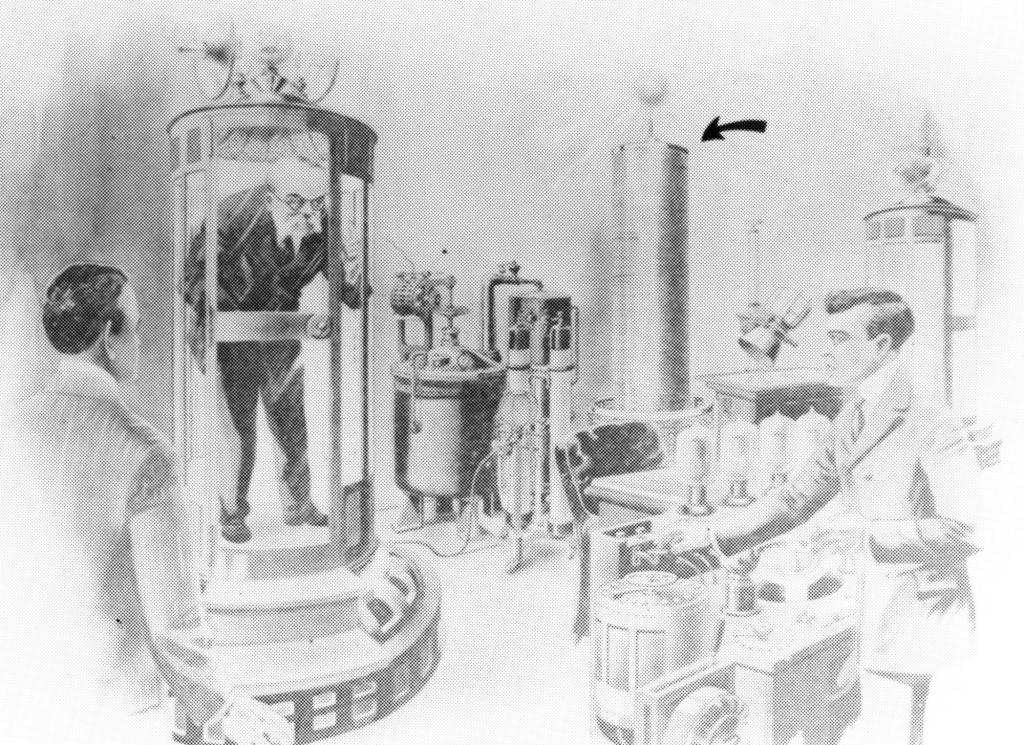TCBA Volume 3 - Issue 1
Page 15 of 18
Tesla Coils in Fiction
by
George R. Wells
(Science & Invention)
(September, 1921)
Synopsis
Dick Harvey and Leo Swanson are electrical engineering students at Kansas State College. Because of their successful demonstration of a wireless telephone project before the Kansas State Science Club, the boys have been invited to the private laboratory of Professor Schmitz.
The two boys became awestruck by the sight of the elaborate equipment in the Professor's laboratory. One point of interest was an apparatus connected to an antenna made of helim wire. One of the Professor's crowning achievements was his discovery of a method of solidifying helium gas. The helium wire antenna has allowed the Professor to tune in on the frequencies of the helium atoms in the Sun and stars.
But it was the large apparatus that appeared bewitching to the boys. It consisted of a complex transmitting and receiving apparatus. One major part of this equipment was a huge Tesla coil (see arrow). The purpose of this invention was to act as an electron transmitter. For example, any object placed in the special transmitter cabinet would be reduced to simple electrons and then transmitted to a receiver that would reassemble then into their original form.
To demonstrate, the Professor placed his big Angora tomcat into the transmitter cabinet and pulled a series of large levers. Suddenly, a motor generator began to hum. This was followed by a heavy stream of high frequency sparks that literally consumed the space in the lab. Two large globes, similar to X-ray tubes, began to emit an eerie glow. The room was filled with an aura of impending doom. Upon ending the demonstration, the Professor calmly walked over to the receiver cabinet and retrieved his pet. It appeared unruffled over the experience and not one strand of fur was misplaced. The two engineering students were speechless.
The Professor repeated the experiment with various objects about the room. Among the specimens reduced to electrons and hurled into space were a dog, a book, then a canary bird, a pair of shoes, a silver ring, a neck-tie, a pocket camera, and a picture. Next, Dick and Leo were invited to step into the transmitter booth but the boys were so shocked by what they had witnessed than neither of them dared take one step forward.
To show his confidence in the apparatus, Professor Schmitz volunteered to be transmitted across the room. Upon instructing the boys as to the correct method of operating the equipment, the Professor stepped into the booth. Dick and Leo took their positions and awaited his signal. The Professor gave a slight nod and the boys responded according to his instructions.
Not since that fateful evening has anyone around the campus of Kansas State College seen the professor. As far as they know, the Professor's electrons are on an never ending journey through space. Dick and Leo continue to visit the Professor's laboratory in hopes of solving the correct order in which the switches must be pulled.

